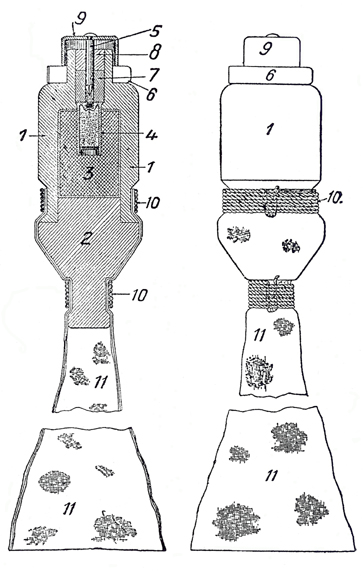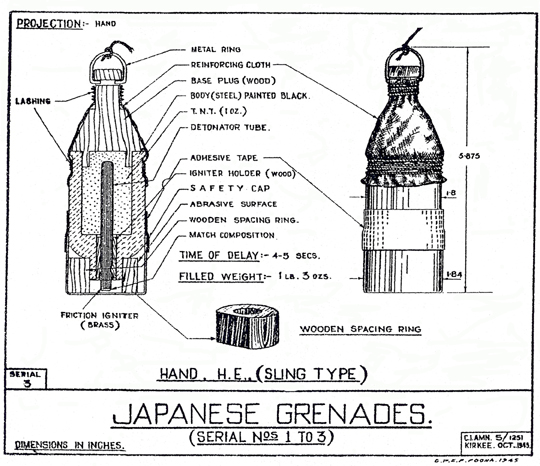WWI Impact Grenade
TYPE- Fragmentation
WEIGHT- 600 gm
DIAMETER-
LENGTH-
IGNITER- Impact
FUZE DELAY-
FILLING- 35 gm
DETONATOR-
This grenade was used by the Japanese in WW I.
The main body is a rough cast steel cylinder with an open bottom
and a stem cast on the top end.
A groove is cast into the body around the bottom end.
The explosive cartridge fits into the body from the bottom end.
The bottom is closed by a turned wooden base piece.
The base piece is covered by a cloth tube which is then tied of
at the top end in the groove formed in the main body.
The bottom is also tied off at the bottom end in a groove formed
in the bottom end of the wooden base piece.
The cloth and lashings also act to hold the wooden base piece in
place. The remainder of the
cloth tube forms a tail to ensure the grenade flies head first.
The top end of the body has a stem that is drilled through in the
centre. The impact igniter
mechanism fits into the central hole.
A detonator set is inserted through the centre hole into the main
charge. A wooden plug with
a small hole in the centre is then inserted in the hole and pushed down
to hold the detonator set in place.
A safety block fits around the stem.
The striker assembly consists of a cap, striker, and rubber plug.
The striker is mounted solidly in centre of the cap.
The rubber plug has a hole in the centre that fits tightly over
the striker. The rubber
plug is inserted on top of the wooden plug and the striker then inserted
in the hole and pushed down until the cap rests on top of the safety.

